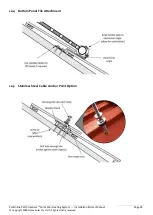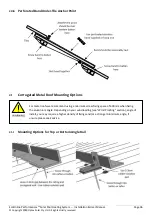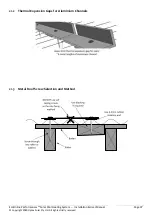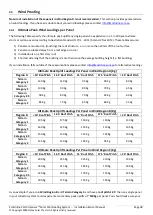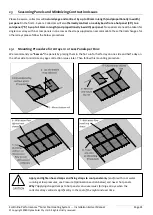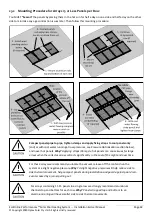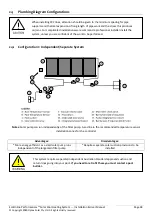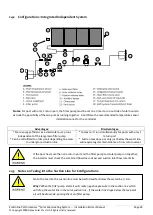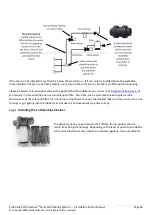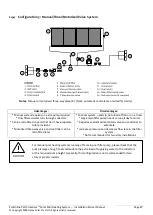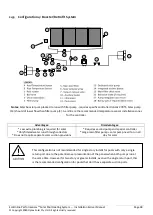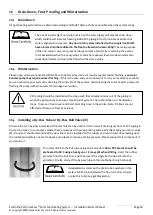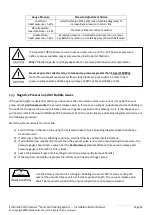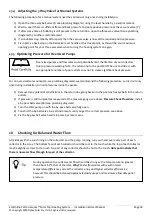
EcoOnline Perf
™
Solar Pool Heating System -- Installation & User Manual
© Copyright 2020 Optex Solar Pty Ltd. All rights strictly reserved.
Page 49
25
Installing the Controller for Independent Systems
Please refer to the controller manual as different controllers have specific installation instructions. Here we only add
supplemental instructions; they should not override any specific controller instructions. Note: controller manuals are
downloadable from the EcoOnline website.
25.1
Installing the Roof/Hot Sensor
If your controller comes with a long 20m cord hot roof sensor it should be adhered using silicon to a sun exposed
roof tile or section of corrugated metal roof. It should
NOT be installed, on top off, inserted into, or under an OKU
panel
. Ideal placement is within arm’s length of the gutter.
25.2
Installing the Pool/Cold Sensor
The cold sensor should be
fitted inside a section of PVC suction line
(before the solar pump) and sealed using the
grommet supplied. For this you will need to drill a hole in the suction line, please check the controller manual for the
recommended size.
25.3
Extending Sensor Cords
The sensor cords can be extended using a similar type cord but in a larger gauge wire. Note, the Dontek cold sensor
uses a shielded type cord; hence you will need the same (but in a higher gauge) if extending it. Please contact
Dontek or Ascon if unsure.
PVC plastic should be preheated to 5
0˚C using a heat gun or it may split when drilling.
You should practice on a pipe off cut as certain drill bit types can
“bite” hard into
PVC and
the drill can “kick”. We recommend a step drill bit. A cone shaped rolled up piece of
sandpaper can be used to
even out or increase the diameter of the hole if you don’t have
the exact size drill bit.
When extending the cord we recommend a “lap splice” solder join with adhesive heat shrink.
Solder joins should not placed in any conduit section running under ground.
If the cord is too short the sensor can also be located on any
unshaded
“roof proxy”
surface that faces the same part of the sky as the panels to approximate the surface
temperature of the roof itself. Alternatively, it can be extended see below.

